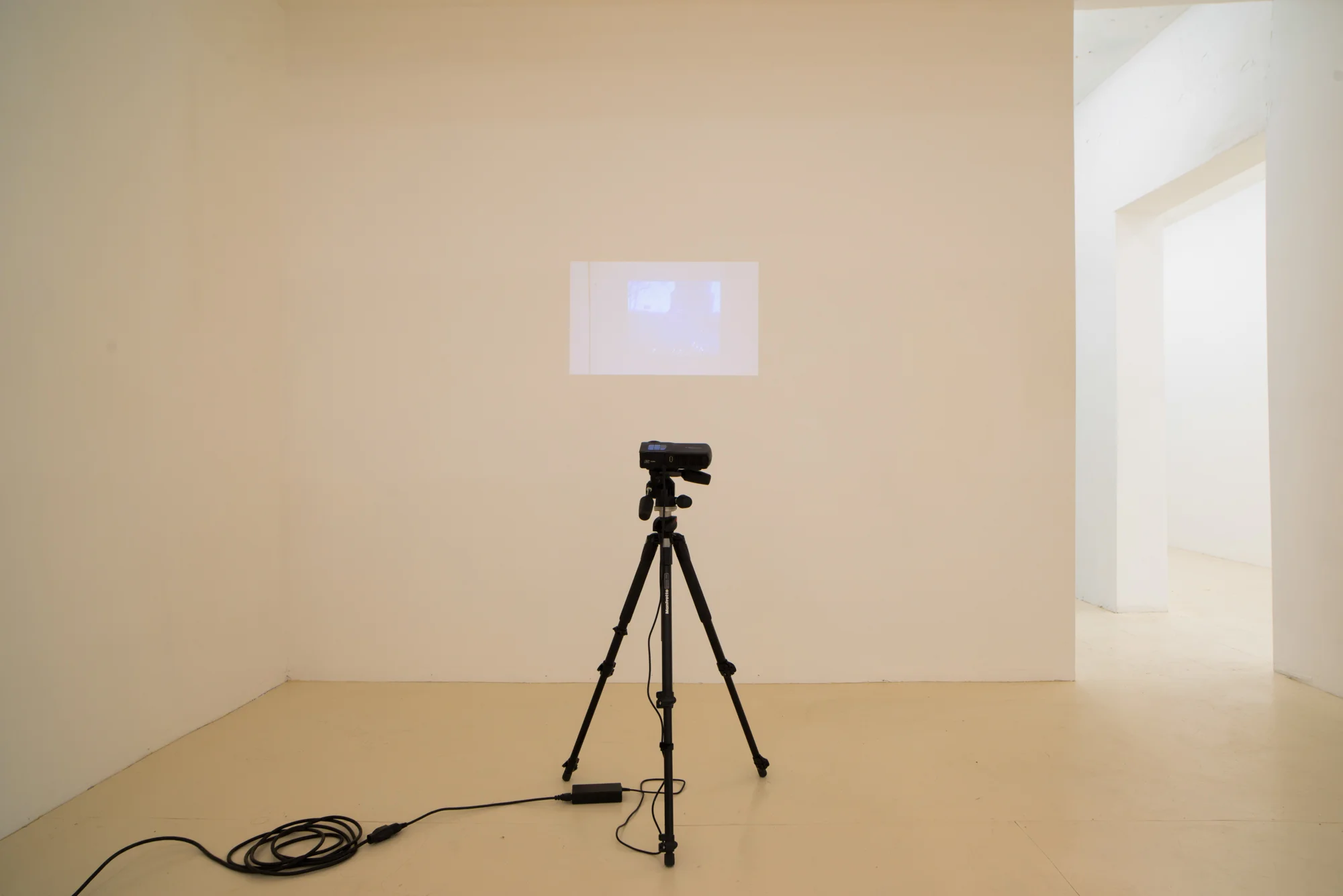ANNA PLESSET, FRED TERNA, AND DANIEL TERNA
PLACE/IMAGE/OBJECT
JACK BARRETT
JANUARY 11–FEBRUARY 24, 2019
Jack Barrett is pleased to present Place/Image/Object, a multigenerational three-person exhibition featuring the work of Anna Plesset, Fred Terna, and Daniel Terna. The show comprises a video projection and painting installation by Plesset; a short film by Daniel Terna; and drawings by Fred Terna. Through physical and psychological encounters with sites and spaces, the three artists combine the monumental and the intimate, the remembered and the witnessed, the traumatic and the blissful to explore the construction and interpretation of history by drawing on first-hand experience.
Plesset’s work, part of a larger project titled Various Records, consists of a video projection and a painting installation comprised of trompe l'oeil paint- ing in a freestanding room. The project grew out of Plesset's discovery of film footage shot by her grandfather while he was serving as an American army psychiatrist in World War II. Following his arrival in Normandy in 1944, Plesset’s grandfather traded a P38 pistol for a 16mm camera and subsequently documented the immediate aftermath of the war, capturing scenes that cut between ravaged landscapes (collapsed bridges, bombed out buildings, forced labor camps), touristic sights (Big Ben, the Eiffel Tower, Moulin Rouge), and the idyllic (family vacations, mountain views, ducks on a pond).
Using the film as her guide, Plesset retraced her grandfather’s path through Europe and in so doing, accumulated photographs, ticket stubs, museum pamphlets, postcards, maps, and other documents. The sequence of imagery painted in oil directly onto the walls of Travelogue (21st Century Room) (2013-2018) synthesizes these various ephemera into a singular record, evoking a site of research-in-progress to look at the psychological and physical relationships between war, trauma, suffering, and everyday life. In Document of a Travelogue by Lt. Col. Marvin R. Plesset, Division Neuropsychiatrist (2013), Plesset re-films her grandfather’s unaltered footage as a projection onto her studio wall to establish a new point of view and present the film as an autonomous document of travel through geography, history, memory, and technology. By relying on forms—trompe l’oeil and film—that offer the illusion of reality in their verisimilitude and yet inherently present an altered version of reality, Plesset examines how history is witnessed, experienced, authored, and shared while raising questions about the veracity of records, the meaning of seemingly insignificant objects, and the translation of history, memory, and knowledge.
Fred Terna's ink on paper drawings, which predate his arrival in Paris in 1946 through his 1952 move to the United States, feature scenes of post-war Europe and New York City's urban landscape. Terna, a Holocaust survivor, began drawing, covertly, while interned in German concentration camps between 1941 and 1945. Depicting cityscapes, domes- tic scenes, and bucolic landscapes, the drawings—at once loose and precise, many still in their original note- books—consider the process by which we study, analyze, and attempt to self-orient in place. Terna’s subjects, which include the room of his first hotel in Paris, the crowded apartments of the Latin Quarter, the trees of the Bois de Boulogne, the docks in Brooklyn, and New York City’s bridges—spotlight sites evoking ideas of travel, movement, and modernization.
Daniel Terna’s My First Wife Stella (2013) is a still and moving image project. Kodachrome slide pictures taken by Fred Terna, Daniel’s father, during a 1967 trip with his first wife Stella, structure and propel the narrative of Daniel’s piece. Hoping to gain insight in to his father’s relationship with Stella, a Holocaust survivor whom Daniel never met, and the period of his father's life following World War II, Daniel retraced the route of the couple’s 1967 trip through central California, a vacation that had been suggested for its potential therapeutic effects on Stella following her traumatic experiences in the camps. The slides serve as a record for an event that was never witnessed by Daniel. They also function as markers on a map, commemorating sites that have no formal monuments but are imbued with personal significance. Strung between the still shots is video documentation of Daniel and Fred, which offers intimate glimpses in to their daily interactions.
Place holds memory, so do the things we leave behind. Bringing together work spanning seventy-five years, Place/Image/Object explores the impulse to connect with the past through the images, objects, and places we encounter and considers how such tactile and visual experiences shape our understandings of history and the present.
Press:
Will Heinrich, "What to See in New York Art Galleries This Week," New York Times, January 30, 2019
Louis Block, “The Past Pushes Forward in an Exhibition About Memory,” Hyperallergic, February 13, 2019
“Sci-Fi Mosquitos & Smoke: 7 Cinematic Exhibitions Around the Globe,” Cultured Magazine, February 22, 2019







